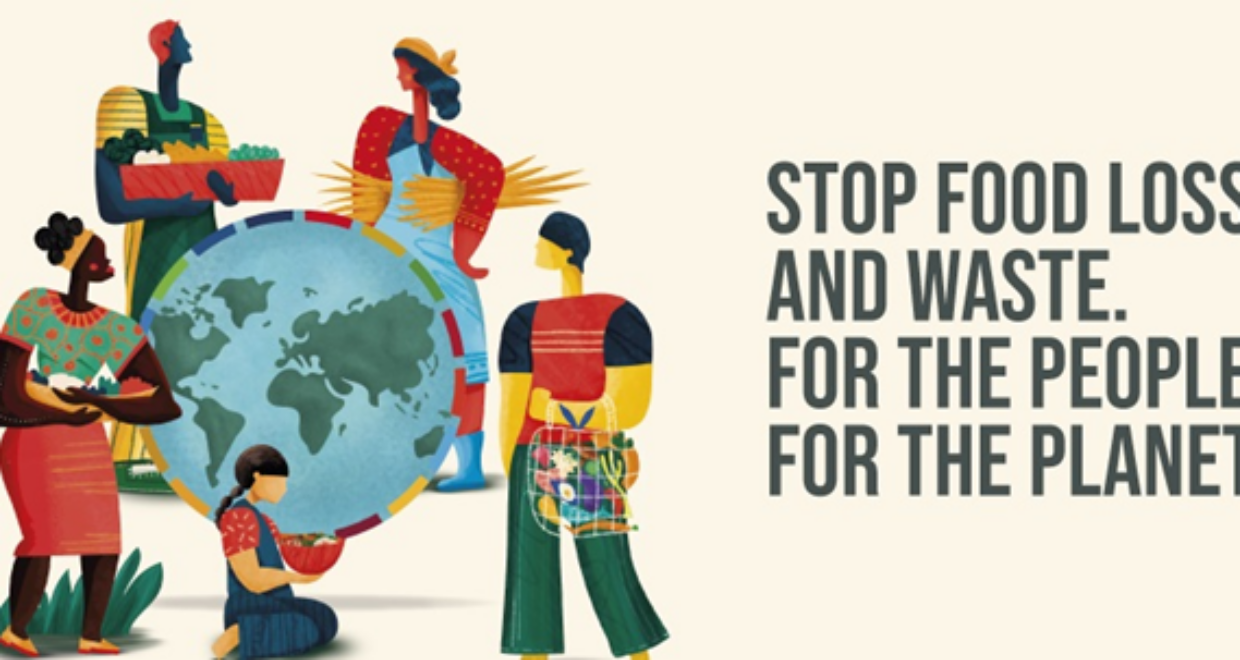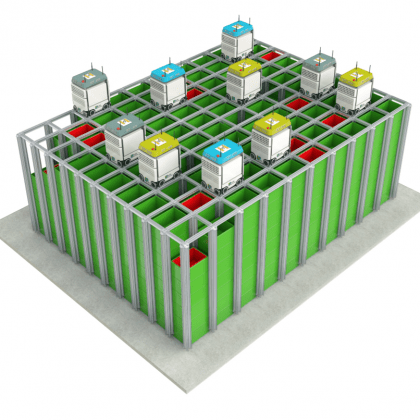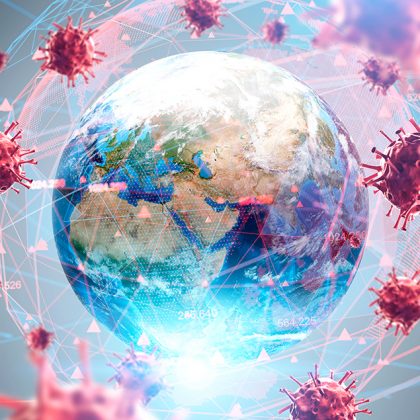International Day of Awareness of Food Loss and Waste
September 29th is designated as the International Day of Awareness of Food Loss and Waste by the United Nations General Assembly and is co-convened by the Food and Agriculture Organization and the United Nations Environment Program.
This day aims to highlight the importance of the food waste problem with a focus on possible solutions and collective action. Sustainable Development Goal 12.3 targets halving per capital global food waste by 2023. In the EU, Member States aim to meet this goal by reducing processing and manufacturing related food waste by 10% and retail/consumption related food waste by 30%.
This priority is especially important given that the world produces enough food to theoretically feed the entire global population; nonetheless, millions still suffer from hunger and malnutrition. Highly nutritious foods also tend to be the most perishable and constitute a high proportion of food loss.
Furthermore, food waste that ends up in landfills may account for as much as 10% of total agrifood system greenhouse gas emissions. Reducing the amount of food that ends up in landfills could have a significant impact on our changing climate; beyond these emissions, wasted food also wastes the resources that were used to produce the uneaten food. This might include water, land, energy, and labor that all essentially go to waste.
To recognize International Day of Awareness of Food Loss and Waste, Cambridge University Press is featuring the following seven articles selected from its journal Renewable Agriculture and Food Systems by Editor-in-Chief Katherine Dentzman. These articles cover a wide range of issues related to food waste, including documentation of Food Policy Council management approaches, reviews of on-farm food waste and policy options, an inventory of food waste in campus dining operations, the relationship between SNAP-Ed and food waste, and the potential of food waste management for addressing energy and climate related priorities.
Below, we provide citations, links, and a brief description of each article. We encourage you to pick at least one that interests you and read it in more depth in honor of International Day of Awareness of Food Loss and Waste.
Nadeau, N. & E. A. Koebele. 2023. Collaborating to reduce food waste: Building collaborative advantage in local food systems. Renewable Agriculture and Food Systems 38, e32.
- This study analyzes how five Food Policy Councils across the United States foster collaboration to achieve policy and programmatic goals that individual stakeholders could not otherwise achieve alone.
- Assessing plan documents and conducting demi-structured interviews, the authors found that Food Policy Councils have high potential to reduce food waste by conferring collaborative advantages in establishing comprehensive food system plans, systematically measuring progress, and transparently communicating evidence of progress.
O’Connor, J., S. Skeaff, P. Bremer, G. Lucci, & M. Mirosa. 2023. A critical review of on-farm food loss and waste: Future research and policy recommendations. Renewable Agriculture and Food Systems 38, e24.
- This study conducts a narrative review of the current research landscape, taking stock of on-farm food waste definitions, quantification methods, drivers, proposed solutions, management options, and recommendations for future research.
- Overall, on-farm food loss and waste is estimated to account for 16% of all agriculture-related greenhouse gas emissions globally. The review found numerous research articles on the topic, but these lacked consistency—primary data collection to identify prevention strategies, as opposed to simple documentation, is encouraged.

Lee, M. E. Steiman, M. W., & St. Angelo, S. K. 2021. Biogas digestate as a renewable fertilizer: Effects of digestate application on crop growth and nutrient composition. Renewable Agriculture and Food Systems 36(2): 173-181.
- This study investigates the potential of biogas digesters to convert waste—including food waste—into a natural gas-like fuel and nutrient rich digestate by-product that can be used as a soil amendment.
- They found that the soil amendment fostered higher growth and fruit production of several studied crops compared to a control, but had lower performance than conventional fertilizer. Still, this could be especially useful in agrarian communities attempting to reduce and recycle food waste.
Gosliner, W. & Shah, H. 2020. Participant voices: Examining issue, program and policy priorities of SNAP-Ed eligible adults in California. Renewable Agriculture and Food Systems 35(4): 407-415.
- This study conducted focus groups with SNAP-Ed eligible parents in California, uncovering challenges including inadequate income and limited access to high quality food compared to unhealthy food.
- Related to food waste, the authors found that fears of wasting food impacted participants’ food acquisition and preparation decisions. Specifically, these fears limited the purchase of and experimentation with fresh and perishable foods—particularly fruits and vegetables.
Walia, B., & S. Sanders. 2019. Curbing food waste: A review of recent policy and action in the USA. Renewable Agriculture and Food Systems 34(2): 169-177.
- This review estimates the scale of food waste in the United States and its impacts in terms of methane emissions and water use, as well as covering recent public and private actions aimed at curbing food waste.
- Findings suggest that, if we could capture 15% of the present stock of edible food waste, we could meet 35% of the caloric needs of all Americans living in food insecure households.
Niles, M. T., Ahuja, R., Barker, T., Esquivel, J., Gutterman, S., Heller, M. C., Mango, N., Portner, D., Raimond, R., Tirado, C., & Vermeulen, S. 2018. Climate change mitigation beyond agriculture: A review of food system opportunities and implications. Renewable Agriculture and Food Systems 33(3): 297-308.
- This article reviews climate change mitigation options in the food system beyond the realm of production.
- They identify complicated pros and cons to technological innovations surrounding food waste, with some technologies such as refrigeration decreasing spoilage while also encouraging overconsumption.
- Low-income countries were found to need greater transportation infrastructure and processing/preservation technologies to reduce food waste, while high-income countries would be better served by shifting consumer perceptions, changes in grocery store marketing practices, and diversion of food waste to animal food, compost, and methane capture.
Costello, C., Birisci, E., & McGarvey, R. G. 2015. Food waste in campus dining operations: Inventory of pre- and post-consumer mass by food category, and estimation of embodied greenhouse gas emissions. Renewable Agriculture and Food Systems 31(3): 191-201.
- This study collected data on food waste for four all-you-care-to-eat dining service halls at the University of Missouri over three months in 2014.
- They found that 5.6% of food was lost at the pre-consumer stage and 10.7% was lost at the post-consumer stage.
- By weight, fruits and vegetables constituted the highest loss. However, by carbon dioxide waste, meat and protein contributed the greatest loss. The authors highlight the importance of how we measure food waste, specifically differences in weight versus greenhouse gas emissions.






